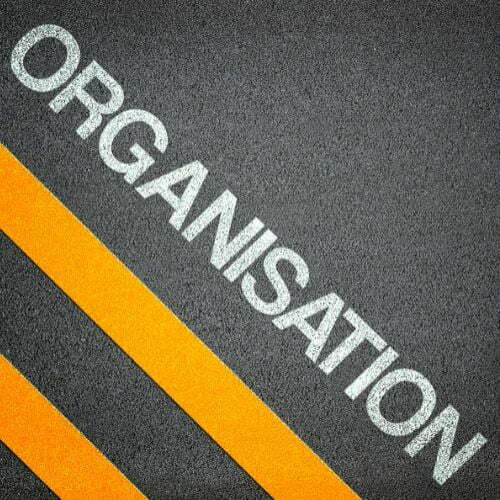The term “Hardware” refers to a physical asset that a business may own. Here at itemit, we know how important it is for businesses to get their hardware assets organised.
When every piece of hardware is organised there’s a real potential for a business to run efficiently. This is why using our hardware asset management software is crucial.
What is Hardware Asset Management?
Hardware asset management revolves around the organisation of your hardware. When assets such as these are organised users can have much more control over them. Managing hardware involves looking after it at every stage of its lifecycle.
The lifecycle of hardware assets is comprised of 6 stages:
- Request: The first stage refers to the need for hardware
- Fulfil: Once a request has been made for an asset it can be ordered and the order can be fulfilled
- Deploy: Every hardware asset can be used as and when required
- Monitor: Hardware assets need to be monitored for faults and damage
- Service: Hardware assets can be serviced regularly. This can help to increase its lifecycle.
- Retire: The last stage refers to an asset that has reached the end of its lifecycle. This may be because it can no longer be repaired. Once an asset has reached this stage it is possible to put in a request for some new hardware.
While the lifecycle of every asset may be more complicated than you realise, our hardware asset management software can make things easier. Thanks to the way that it works, our software can help businesses everywhere to deal with their hardware from the first to the last stage.

How To Get Organised
Getting organised is relatively easy when you use our asset management software. Our software has been specifically designed to take the hard work out of asset management. To get organised, users simply need to do the following:
Create An Asset Inventory
Creating an asset inventory involves users adding all of their hardware assets to itemit’s software. Users can add as many details about the assets as they wish. For example, it is possible to add the following details:
- Name
- Serial number
- Size
- Colour
- Date of purchase
- Price at purchase
- Estimated current value
- Estimated lifecycle
- Estimated resale price
- Insurance details
- Warranty information
- Maintenance reminders
Users can add as much information about every hardware asset as they wish. As soon as the desired information has been added, users can affix an RFID tag or QR code to the asset. The QR code, for example, can be assigned to the asset and used to track its location. Users can also track the asset’s use and maintenance status.
Assign Assets To Employees
Another feature of itemit’s hardware asset management software is that it can be assigned to employees. Management can ensure that every employee has the tools they need to complete their tasks.
Should the assigning of assets not be required there is another feature that may prove useful. Users can check the assets in and out, should they wish to. When hardware assets are monitored this way it’s easier to see whether there are sufficient assets. It is also possible to see which employees have which assets.
When an employee checks an asset out they are likely to look after it. As a result, hardware assets are less likely to become damaged, lost, or stolen. This potentially means that an asset’s lifecycle will automatically be extended.
Track The Location Of An Asset
Thanks to the way that itemit’s asset management software works, it’s possible to track assets. Users can see where their chosen assets are at all times. As long as a QR code or RFID tag has been attached to the asset in question, it can be tracked.
This feature can prove to be wholly useful when an asset is used in multiple locations. It can help management to see where the assets are and if they have arrived at their destination. This feature also brings with it an extra layer of security. Assets are much less likely to get lost or stolen if they are tracked. As a result, businesses can potentially spend less money on replacement assets.
Organise Asset Into Asset Categories
Assets can be organised into specific categories. The categories can relate to the type of asset, location, frequency of use, or any other category.
This feature can be highly useful when users need to search for a particular type of asset. Helping users to save time, once the required assets have been found they can be used as needed.
Organise Your Assets With itemit’s Hardware Asset Management Software
As you can see, it is possible to organise your assets. itemit’s asset management software makes it easy to organise assets. Find out just how well our hardware asset management software can work for you. Reach out to our helpful team today at team@itemit.com. Alternatively, you could fill in the form below to get started.
Hardware Asset Management
Choose a better way to track your assets
Start your free 14-day trial now
Instant access. No credit card details required.
You can also start your 14-day free trial by filling out the form below, or you can contact us at team@itemit.com or at 01223 421611.
Or, you can check out these blogs:
What Are the Best Asset Management Tracking Tools?
3 Ways Fixed Asset Tracking Software Saves you Time and Money
How to Track Maintenance with Heavy Equipment Maintenance Software
Latest posts
itemit Blog
Tips, guides, industry best practices, and news.
Latest posts
itemit Blog
Tips, guides, industry best practices, and news.
Related articles
Exploring Different Types of Inventory and Their Impact on Asset Tracking
Learn about the 4 types of inventory—raw materials, WIP, finished goods, and MRO—and their impact on asset tracking. Discover strategies for better inventory management.
Inventory Planning Best Practices: Avoid Stockouts and Overages with Asset Tracking
Discover inventory planning best practices to avoid stockouts and overages. Learn how asset tracking improves accuracy, reduces waste, and optimizes supply chain management.
Markup vs. Margin Difference: Optimise Inventory Profitability
Learn the key differences in margin vs markup in inventory management. Understand how each affects pricing, profitability, and business growth to optimize your strategy


